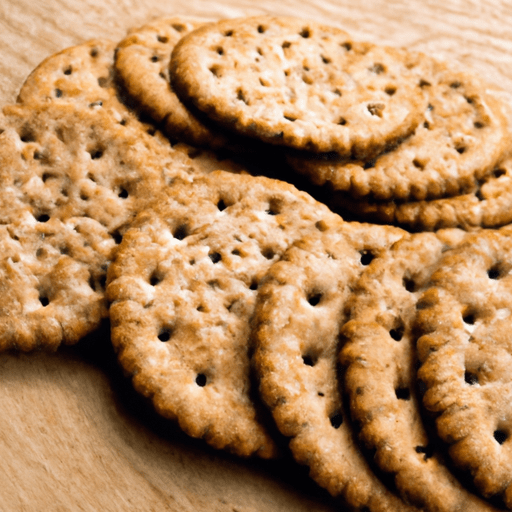The Delightful Digestive Biscuit: A Perfect Companion for Every Occasion
When it comes to biscuits, there are few that can rival the beloved digestive biscuit. With its distinctive texture and subtle sweetness, this humble treat has earned a special place in the hearts of biscuit enthusiasts around the world. In this article, we will explore the delicious world of digestive biscuits, from their taste and common uses to their nutritional value and intriguing history.
A Taste of Tradition
Digestive biscuits are renowned for their wholesome taste and delicate texture. These biscuits are typically made from a combination of whole wheat flour, sugar, and fat (usually butter), creating a crumbly and slightly crunchy texture. Despite their name, digestive biscuits do not contain any medicinal properties, but they do offer a comforting and satisfying flavor that pairs well with both sweet and savory accompaniments.
Versatile in the Kitchen
One of the greatest attractions of digestive biscuits is their versatility in the kitchen. These biscuits can be enjoyed in numerous ways and are often used as a key ingredient in many dessert recipes. Crushed digestive biscuits make a fantastic base for cheesecakes, pies, and tarts, adding a delightful crunch and subtle sweetness. Additionally, they can be added to ice cream sundaes or milkshakes for an extra touch of indulgence.
Beyond the realm of desserts, digestive biscuits also shine as a complement to a cheese platter or charcuterie board. Their sturdiness and mild flavor make them an ideal vessel for spreading creamy cheeses or enjoying alongside savory cured meats.
Nutritional Benefits
Digestive biscuits may be a tasty treat, but they also offer some nutritional benefits. Thanks to their whole wheat flour content, these biscuits are a source of fiber, which aids in digestion and helps promote a feeling of fullness. Although they do contain some sugar and fat, enjoying digestive biscuits in moderation can be part of a balanced diet.
A Rich History
The origins of digestive biscuits can be traced back to the early 19th century in Scotland. It was Alexander Grant, a young Scottish doctor, who first developed the recipe in 1839. The biscuits were originally crafted with the intention of aiding digestion due to their high baking soda content. While the digestive benefits may not hold true today, their popularity has only continued to grow over the years.
Intriguingly, digestive biscuits were a staple in British military rations during World War I and World War II. These biscuits were highly regarded for their long shelf life, nutritional value, and ability to withstand rough handling. To this day, they remain a beloved snack in the United Kingdom and have gained international recognition as well.
Conclusion
Whether enjoyed with a cup of tea in the afternoon or utilized as a key ingredient in a show-stopping dessert, digestive biscuits are an all-around delightful treat. Their distinct flavor, versatility, and historical significance are a testament to their enduring popularity. So, whether you’re a seasoned biscuit enthusiast or have yet to discover their charm, it’s time to unleash your culinary creativity and embrace the magic of digestive biscuits.
Digestive Biscuits
Digestive biscuits are a type of semi-sweet biscuit that originated in the United Kingdom. Here are some interesting facts about digestive biscuits:
Origin: Digestive biscuits were created in 1839 by a Scottish doctor named Alexander Grant at his bakery in Edinburgh. Originally called “Digestive Cakes,” they were created with the intention of aiding digestion.
Common Uses: Digestive biscuits are often enjoyed with tea or coffee and can be eaten plain or accompanied by other toppings such as butter, cheese, or chocolate spread. They are also used as a base for desserts like cheesecakes or pie crusts.
Ingredients: The main ingredients of digestive biscuits include whole wheat flour, sugar, vegetable oil, baking soda, and sometimes malt extract. The use of whole wheat flour gives them a characteristic nutty flavor and slightly coarse texture.
Nutritional Benefits: Digestive biscuits offer some nutritional benefits. They are a good source of fiber due to the presence of whole wheat flour. Additionally, they contain small amounts of minerals like calcium and iron.
Unique Properties: One unique feature of digestive biscuits is their slightly crumbly texture, which makes them a popular choice for pie crusts. They are also known for being moderately sweet, allowing them to balance with various flavors.
Historical Significance: Digestive biscuits gained popularity in the early 20th century and have since become a staple in British households. They were even included in the ration packs of British soldiers during World War I because of their long shelf life and ability to sustain hunger.
Remember to always check the specific nutritional information on the packaging, as ingredients and nutrient content may vary depending on the brand or recipe used.




Use the share button below if you liked it.
It makes me smile, when I see it.